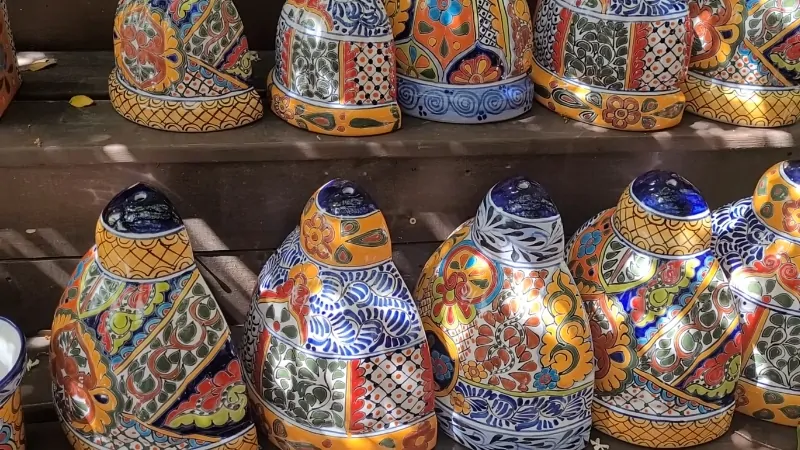Antiques are so enchanting; it’s difficult to overlook them. When it comes to attractive pottery, this age-old style never disappoints.
Whether it’s in the living room or at the dining table, your guests’ curiosity is captured with unique pieces of your Talavera collection and have a conversation piece with this ancient artwork.
If you’re discovering this pottery style, then you’ve come to the right place. Read on to rediscover Talavera and what makes it special.
What is Talavera?
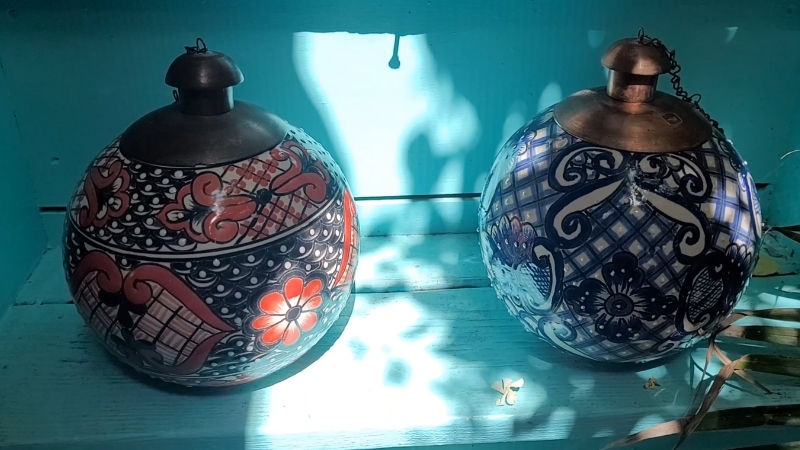
Talavera is a name given to beautiful, hand-decorated pottery that is tin-glazed and high-fired to a glossy finish.
This earthenware features numerous decorative products, such as tiles and plates. Also, functional dishes such as serving plates, bowls, jars, and mugs are available.
This craft has its roots in Talavera de la Reina, Spain, where it spread to Mexico during the country’s colonial era in the 1500s.
A Brief History of Talavera
Medieval Spaniards had comprehensive experience in pottery long before the invasion and eventual occupation of the Iberian Peninsula by the Muslims in 711.
They were skilled in manufacturing assorted products such as floor tiles, roofing tiles, mosaics, kitchenware, and fountains.
This craftsmanship was concentrated in Coastal Eastern and Southern Spain. River Tajo supplied the pottery industry with red clay.
The Birth of Talavera Majolica
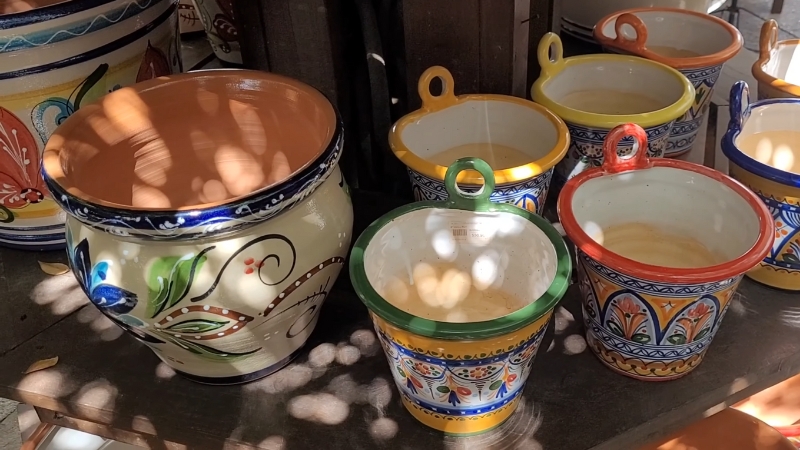
The Muslims introduced Spaniards to Majolica. This technique involved dipping fired red clay ceramics in a cream-white glaze and hand painting them.
The colors were often yellow, gold, green, and royal blue. By the 1500s, the city of Talavera was a thriving center for majolica pottery.
Around this time, the Spaniards conquered Mexico and established a new city, Puebla.
The colonial masters built churches, convents, and monasteries to entrench the Roman Catholic faith.
They also brought seasoned majolica pottery from Talavera, Spain, and entrusted them with producing tiles and other artistic items to decorate the newly constructed buildings.
Talavera Arrives in Puebla, Mexico
The master potters worked with locals who were experienced craftsmen and trained them in the skills of intricate majolica pottery. By then, painting techniques had advanced.
They featured a mixture of diverse cultures including Arab, Italian, and Chinese. Puebla was an ideal zone to set up a Talavera pottery center because of the access to quality clay in the region.
By the mid-1600s, Talavera production was a full-scale industry in Mexico. A guild was established in 1653 with ordinances that controlled the standards. This body was instrumental in ushering the city into its golden age, which lasted until 1750.
During this period, Talavera production was at its peak. Also, the Mexican Talavera blended indigenous ceramic techniques with both Italian and Spanish styles, resulting in Talavera Poblana. This moniker distinguished Mexican Talavera from the Spanish version.
Saving the Mexican Talavera Tradition
As fate would have it, the fortunes of this colonial city dwindled with the Mexican struggle for independence between 1810 and 1821.
After the war ended, only a few workshops remained open.
However, efforts to revive this ceramic tradition bore fruits in the 1900s, when the Mexican government passed laws to protect the creation of authentic Talavera.
It obtained the Denomination of Origin in 1997, which limited the production of this pottery to Puebla, Cholula, Tecali, and Atlixco.
The government also established a Regulating Council of Talavera that oversees the manufacture in these areas.
Workshops in these regions must follow strict guidelines and pass inspection every six months to obtain the certificate of origin.
How Talavera is Made
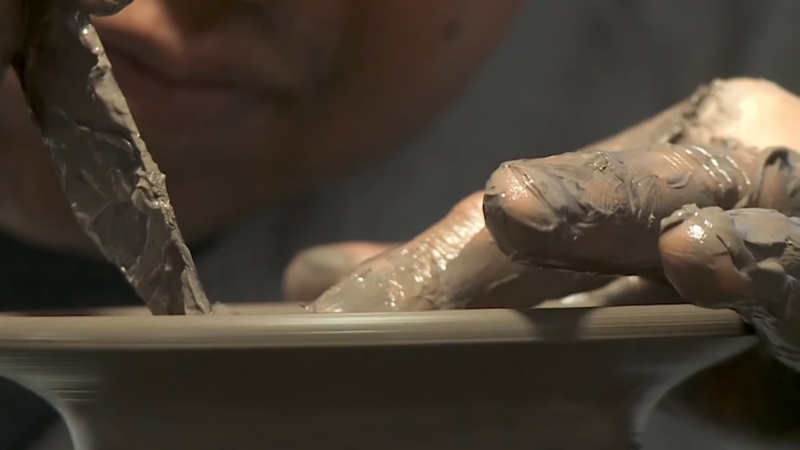
Mexican potters have preserved the centuries-old techniques and passed them from one generation to another.
Making these ceramics starts by preparing clay. At this stage, potters mix black and white sand from Amozoc and Tecali. They wash the mixture in water to obtain the finest particles.
This process cuts the initial volume of the sand by half. The resultant clay is kneaded and set aside to lose moisture to attain the required consistency.
It is then molded into diverse items by hand or potter’s wheel and allowed to air dry.
This process may take weeks before the earthen vessels are taken to the kiln for the initial firing at 15000 F. After this stage, potters inspect the items for cracks and objects that pass this quality check are glazed to produce a milky background.
The tough job of painting now starts. It can take several months, depending on the size of the articles and the artwork’s complexity.
The standard color palette to paint this pottery has six pigments black, blue, brown, green, red, and yellow.
However, they can be mixed to obtain various shades such as purple and orange. It is important to note that strict guidelines limit how these colors can be blended.
Also, for an item to pass as authentic Talavera pottery, it must be painted by hand. The vessels are then placed in a kiln and fired at 19000 F to harden the final glaze.
Who Makes Authentic Talavera
View this post on Instagram
It is difficult for artisans to attain the Talavera production certification because of the labor-intensive processes.
For this reason, only a handful of workshops have maintained certified status since the government established the Regulating Council of Talavera. The following are examples of certified workshops in Mexico.
Thus, if you visit the Puebla region, now you know where to shop for authentic Talavera pottery.
Why is Talavera So Expensive?
Authentic Talavera is about three times costlier than other types of pottery and for good reasons.
For starters, the production follows a strict process where the clay must be from the Puebla region. Clay preparation, kneading, molding, and painting of vessels have to be done by hand.
A single article may take up to four months to create. The items are also fragile, and a single mishap can damage the earthen vessels beyond repair.
To paint this pottery, only six shades made from natural pigments are allowed. Also, few workshops are approved to produce authentic ceramics.
Hence, Talavera pottery is higher priced than other forms of ceramics that use mechanized processes and low-cost commercial paints.
7 Creative Ways to Use Talavera Pottery
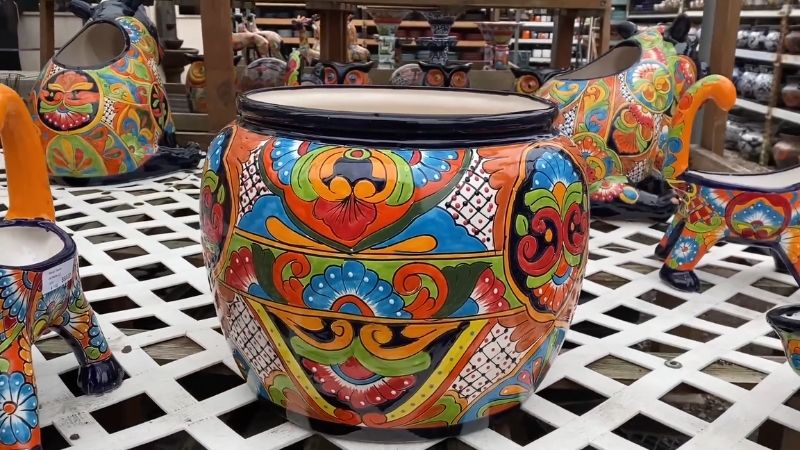
Although Talavera is old-fashioned, you can still use it to adorn your modern home and achieve a classy look befitting a sassy diva. And if you are unsure of where to start, no worries! Below are some infallible tips to help you discover Talavera’s timeless beauty.
1. Talavera Travel Mugs
If you fancy travel mugs for beverages try the exquisite Talavera travel mugs. They come in several wonderful shades. Also, it is a useful and reusable timeless antique.
2. Upgrade Your Barware with a Talavera Tequila Bottle
Do you have a bar at home? How about adorning it with the Halo Tequila Bottle? It has a beautiful design connecting centuries-old pottery to modern life.
The bottle can retain up to 750 ml of your best tequila to make cocktails at your home party.
3. Give Your Kitchen a Mexican Flair
View this post on Instagram
Are you thinking of remodeling your home? Consider using Talavera tiles for your kitchen countertop and a backsplash for the walls.
Whether you prefer checkered patterns or a flowery mix of colorful tiles, these ceramics can give your kitchen a beautiful look. Be bold and select a style that works for you.
4. Don’t Forget the Powder Room
Do you find solace and inspiration in your bathroom, the one safe place where you can relax and be yourself? Then make it special with unique Talavera tiles. Besides being eco-friendly, each tile is distinctive and comes in a range of patterns.
5. Make Your Staircase Extraordinary
Staircases are other areas to display the beauty of Talavera tiles in your home.
This can even be a DIY project. Just estimate the number of tiles needed, get cement, grout, and sealer, and you are ready. If you need ideas, Google tile designs to browse through countless styles.
6. Get a New Flower Vase
Talavera pottery is a Mexican and Spanish pottery tradition named after the town where it originated: Talavera de la Reina, Spain.
Brought to Mexico in the 1600s, the art form uses a white base glaze with brighter, hand-painted detailing pic.twitter.com/avQ7iulRzj
— TLC Garden Centers (@TLCGarden1) July 19, 2024
If you love to decorate your living room with fresh flowers or have potted plants indoors, then give your home a new look with Talavera flower vases and plant pots.
The advantage of ceramic pots is that they absorb water and can keep the soil moist for longer.
7. Spice up Your Mexican Dining Experience
Great dining begins with exceptional presentation. If you love Mexican cuisine, there is no better way to set the mood for such dishes than using Mexican dinnerware.
As luck would have it, an authentic Talavera dinnerware set will do the magic.
Talavera Buying Tips
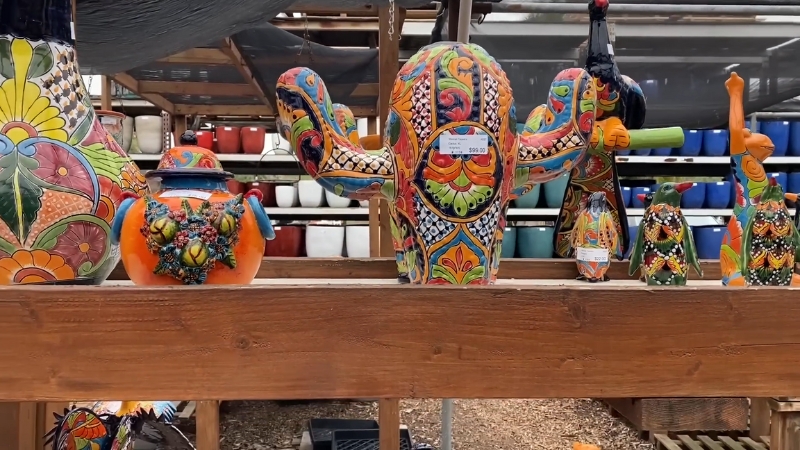
Owning Talavera pottery is more than having a piece of ceramic. It keeps the centuries-old pottery tradition alive and honors the dedicated artisans who make this possible.
Although the pottery style originates in Puebla, Mexico, it incorporates rich Spanish, Mexican, Italian, Arabic, and Chinese heritage.
Similarly, Alebrijes, another form of vibrant Mexican folk art, showcases the deep cultural influences and imaginative craftsmanship that are prevalent in the region.
This sets it apart from other ceramics in its class.
Alas, this age-old artistry faces stiff competition from meticulous imitations. Therefore, below are a few tips to help you identify authentic Talavera pottery.
1. How to Identify Authentic Talavera Items
A successful purchase starts by knowing what makes a piece of pottery an authentic Talavera. For starters, the piece must be a product of an accredited workshop in Puebla, Cholula, Tecali, or Atlixco.
Moreover, the workshop needs to have passed the biannual certification by the Regulating Council of Talavera when manufacturing the pottery.
And how does someone know the details with so many brands on the market? Every authentic piece of ceramic has the workshop logo, a hologram, and the mark DO4 at the bottom. It is also common for items to have the potter’s signature.
2. Talavera Vs Talavera Style
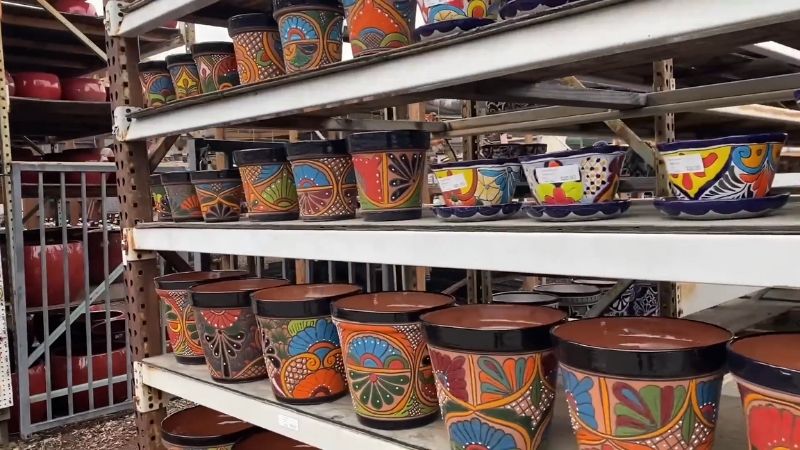
While shopping for Talavera ceramics, beware of common terminologies used by marketers.
Some designs are presented as Talavera-style ceramics, which does not make them authentic.
If the ceramics do not originate from the designated areas within Mexico and are not made using traditional processes, they cannot pass as genuine pieces.
3. Where to Buy Authentic Talavera Pottery
To be certain that you are buying an authentic Talavera piece, buy it from a certified workshop. This may require a visit to the city of Puebla.
Otherwise, you can shop online through trusted resellers. However, before paying for a product, confirm whether they have a return policy if you discover the ceramic is a replica.
Inspiration to visit Puebla – Talavera Mecca
@touristtolocal Places you have to see in Mexico: Puebla!! Puebla is everything we love about Mexico. Add this city to your list of Mexico travel destinations! #puebla #pueblamexico #mexicotravel #travel #traveltok ♬ original sound – touristtolocal
To see the history of Mexican Talavera come to life, then visit Puebla City.
The city was recognized as a UNESCO World Heritage Site in 1987, due to its unique architecture, with rich cultural and historical values.
The buildings in this colonial city are decorated with Talavera pottery. Examples of places to visit include; Zocalo, Puebla Cathedral, Palafoxiana Library, and Casa del Deán building, to mention a few.
Albeit, a trip to Puebla is not complete without visiting a certified workshop. Experts will walk you through the process of manufacturing authentic ceramics.
Final Thoughts
The history of Talavera dates back to 711 when the Muslims invaded and occupied present-day Spain. The Spaniards would then export this mastery to colonial Mexico in the 16th Century.
Here, Talavera pottery thrived thanks to the availability of skilled labor and special clays around the Puebla region. Nonetheless, Puebla’s golden age declined with Mexico’s agitation for independence.
In 1997, the Mexican government sought to revive this centuries-old artistry when it created the Denomination of Origin, which defined Talavera as pottery originating from Puebla and the surrounding areas.
Although this earthenware is from Mexico, it transcends Mexican tradition and incorporates Spanish, Italian, and Chinese cultures.
And of course, no Mexican meal is complete without a perfect drink to go with it—whether it’s a classic margarita or a fresh agua fresca.
This makes Talavera pottery worth preserving as part of human history. There are multiple ways in which you can tap into this abundant heritage and adorn your home with this timeless pottery. These include functional and decorative vessels.

